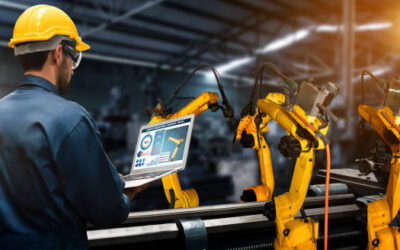Too often, technology is viewed as something that will replace workers, leaving them behind as manufacturers strive for increases in productivity and cost savings.
However, as is the case with most complex topics, the reality is far more nuanced than that. While it is true that automation technology is displacing some jobs, it is also creating new ones. A recent Deloitte report showed that 47 percent of today’s manufacturing jobs may disappear over the next 10 years, but over the same period, the overall headcount will actually increase.
In response to new technology, manufacturing jobs are evolving away from routine and repetitive work and toward more skilled, diverse positions. As companies continue to evaluate how technology fits into factories, they will also need to ensure they are able to attract, retain, and develop workers with the skills needed for these new roles.
The Evolving Workforce and the Shortage of Skilled Workers
Today’s manufacturers are demanding a new type of worker. They need to be technologically savvy, digitally enabled, and skilled in a wide range of abilities. Unfortunately, the supply of these workers has not kept up with demand, making it difficult for manufacturers to fill critical positions. And the problem is only expected to get worse. Deloitte found that, in the US alone, the manufacturing industry is looking at a potential shortage of 2.4 million workers over the next decade.
One of the primary reasons for this is that many older, experienced workers are nearing retirement age and leaving the workforce. At the same time, there has been little emphasis on manufacturing and trade jobs as a viable career path for younger workers. Many view the manufacturing industry as a less-than-optimal choice, and a recent survey found that only 3 in 10 parents would consider guiding their child toward a career in manufacturing. Similarly, schools and post-secondary institutions have shifted to focusing on other industries.
In addition to these demographic shifts, the nature of manufacturing work is changing as well. Executives believe that the top five skills required in the coming years are technology and computer skills, digital skills, programming skills for robots and automation, the ability to work with tools and technology, and critical thinking skills.
This shortage is already having an impact on manufacturers, particularly those who are making investments in technology. Industry Week found that 50 percent of companies see a lack of resources and workforce skill as a significant barrier to implementing planned digital transformation initiatives, while a Microsoft report showed that 82 percent of executives worry the skill gap will negatively impact their ability to meet demand. The majority of executives also worry about how it will impact productivity, innovation, and customer service.
It’s no surprise then that the search for skilled talent was ranked as the number one driver of manufacturing competitiveness. So, what can manufacturers do to attract and retain skilled employees?
Empowering Employees with Technology
Manufacturers will need to rethink their recruitment, hiring, and development programs in response to these trends. Many are already looking to hire recent STEM graduates before they are lost to other industries, especially high-tech companies. Others are placing a greater emphasis on training and development opportunities, either in-house or through outside vocational training.
In addition to these initiatives, manufacturers should look to empower employees and augment their capabilities with technology. Workers, especially millennials and recent graduates, want to be supported by digital tools, and they seek opportunities to learn and grow on the job. They want to see how their work contributes to the organization’s results, and they want to have a voice in conversations about technology and how it will be implemented.
For example, manufacturers could make data and analytics available to workers on the factory floor to help them optimize production runs. Wearables could be used to improve communication, track productivity, or increase safety. Augmented reality or virtual reality could be used to enhance training, allowing employees to learn without the disrupting production. Even simple things, such as using RFID badges to make sign-ins more efficient, can go a long way in demonstrating the organization’s commitment to providing the right tools for employees.
Responding to the Changing Nature of Work in Manufacturing
Over the coming decade, manufacturers will have to find a way to attract and retain skilled workers who are able to work alongside technology. The companies who are successful will be the ones who empower workers with the tools they need to succeed and provide the training and development opportunities needed to keep them engaged and motivated. Ultimately, how this looks will depend on their business model, market, customers, and growth stage. As manufacturers continue to introduce new technology, they must always be considering how their workforce will evolve and change as well.



